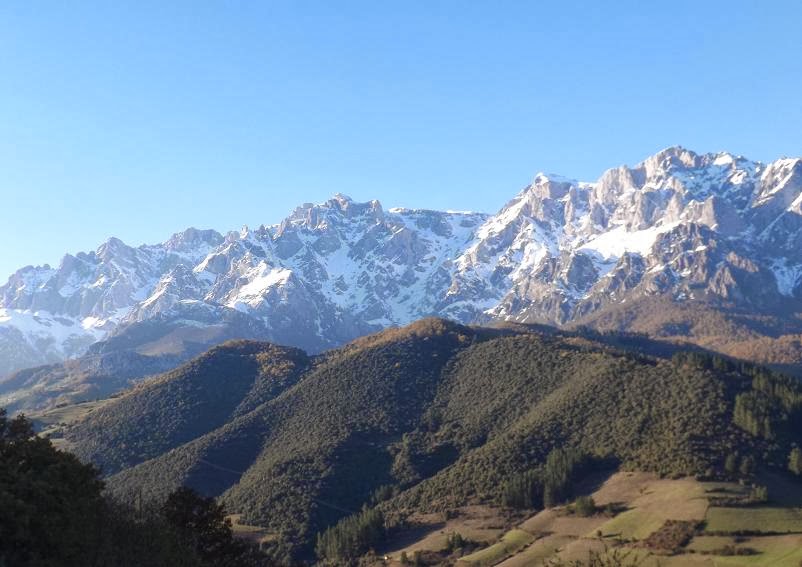Deze post in het Nederlands: Klik hier.
These days its quite cold on the northern Spanish Meseta and the Cantabrian Mountains. However, in the heart of these mountains there exists a low-lying valley that is completely surrounded by high mountains, with a difference in topography of almost 2500 meter. This valley is called the Liebana and lies at the foot of the Picos de Europa, a limestone mountain range that already in 1918 was proclaimed the first national park of Spain. The surrounding mountains keep the wind and rain away, while the low altitude is very beneficial to the average temperature. The Liebana is blessed with a Mediterranean climate, which is unique for the Cantabrian Mountains, which is also clearly evident in its vegetation.
READ FURTHER AND ENJOY THE PHOTOS.
This map shows the location of the valley of Liebana.
Traveling form the southern Cantabrian Mountains to the valley of Liebana is only possible by crossing the San Glorio mountain pass, with its 1605 meters. Just a few kilometers before this pass the road runs through a gorge with many frozen waterfalls.
However, on the other side of the pass the Liebana valley itself was clear of snow. There was a thin cover of clouds which soon disappeared to make place for a splendid day. From the pass of San Glorio we have to descend some 1500 meters.
Descending the mountain pass the temperature rose quickly and soon we only could see the snow of the mountain peaks of the Picos de Europa, the first national park of Spain.
The goals for this day were a mix of searching for some plants that thrive in a Mediterranean climate, such as the strawberry tree (Arbutus unedo) and the cork oak (Quercus suber) and a relaxing day with just a little bit of historic culture. Strawberry trees were found quickly.
The funny thing about the Strawberry tree is that the flowers of this year and the fruits of the previous year may hang together on the same tree. Personally, I find the light alcoholic fruit delicious, so I really had to urge myself some mitigation (because I was driving).
Some trees hang pretty full. Only the red fruits that let go easy are tasty, otherwise they are too hard.
The whole valley of the Liebana is dominated by the mountains of the Picos de Europa, proclaimed the first Spanish national park in 1918 with an area of about 650 square kilometers.
After a short break in the tourist village of Potes we had an almost "obligatory" stop at the church of Santa Maria de Lebeña. The setting of the church is in a very idyllic and historic place,documents of its foundation date back to at least the tenth century and probably even to the eighth century. This area has been free from the Moors since the battle of Covadonga (Asturias) in 722 and was a stronghold of the Christians under the leadership of King Pelayo. With other words, it was one of the first areas to be save of the destructive war-campaigns of the Moors.
Santa Maria de Lebaña , its location is marked on the map above as "Iglesia de Sta . M ª Lebeña", in the most northern part of the valley.
The only thing which was missing for today was the cork oak ( Quercus suber). The cork oak is not present in the rest of the Cantabrian Mountains, which again indicates the prevailing Mediterranean climate.













No comments:
Post a Comment